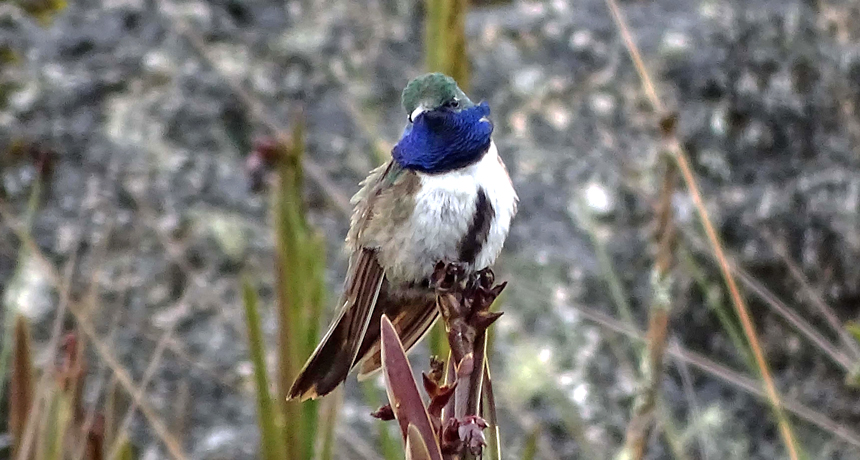Avid bird watchers are always pleased by the splitting of one species into two or more as they add birds to their life list with no effort. Conversely, combining two species into one is dismaying because the life list gets shorter. Taxonomists, those scientists whose speciality is naming organisms, are sometimes grouped into two factions due to their behavior as lumpers or splitters. But naming organisms is a difficult process and names are continually changing and sometimes totally new species are discovered. A Wikipedia article lists all the bird species that have been discovered since 1900; there are quite a few.

In 2017, researchers working in the Ecuadorian Andes stumbled across a previously unknown species of hummingbird — but as documented in a new study, its small range, specialized habitat, and threats from human activity mean the newly described Blue-throated Hillstar is likely already critically endangered.
The species concept seems simple enough. A species is a group of individuals that can interbreed. If two organisms cannot mate and produce viable offspring, they are considered different species. But the concept is actually a bit muddy. Some animals can produce viable hybrids – the mule from a horse and donkey and the liger from a lion and tiger, for example.
Species come about because over time populations become separated. If the ecological conditions in the new environments are somewhat different, the populations will evolve under those separate conditions and natural selection will produce different offspring after many generations. If the populations meet again, they will not interbreed because the accumulated genetic differences are too great; this is speciation.
For many years, ever since humans have been cataloging organisms, the criteria were mostly anatomical – size, shape, bone and bill structure, feather arrangement, color, and so on. Later aspects like physiology, behavior, egg albumin, blood proteins, and diet were used to differentiate between groups. DNA hybridization studies became a very different way of looking at characteristics.
Without getting into detail, DNA hybridization simply means that a double-stranded DNA molecule is split in two and one strand attached to a single strand of another species’ DNA. The harder this hybrid pair is to break, the more closely the species are related. Much of this taxonomy work was done by Charles Sibley and Jon Ahlquist.
DNA testing has made it possible to measure the relationships among different species, families, and orders, leading to major changes in the order of the list. Some of the biggest changes in the American Ornithological Union checklist are reported in an Audubon article. One example is that the Western Scrub-Jay was split into two species, the California Scrub-Jay and Woodhouse’s Scrub-Jay. And Leach’s Storm-Petrel was split into three species. But the biggest change is in the phylogenetic (evolutionary) order of birds. Most bird field guides are organized with the most primitive species first, which used to be loons, grebes, flamingos, albatrosses, and so on, and end up with hummingbirds (before the guide gets to the songbirds). But that list has been reorganized so that the first birds listed are the flamingos, followed by grebes, then pigeons and doves, cuckoos, and ends up with owls. The Audubon article gives more details.
You can get a detailed checklist of all North and Middle American birds from the American Ornithological Society although the new phylogenetic order is not as yet incorporated.